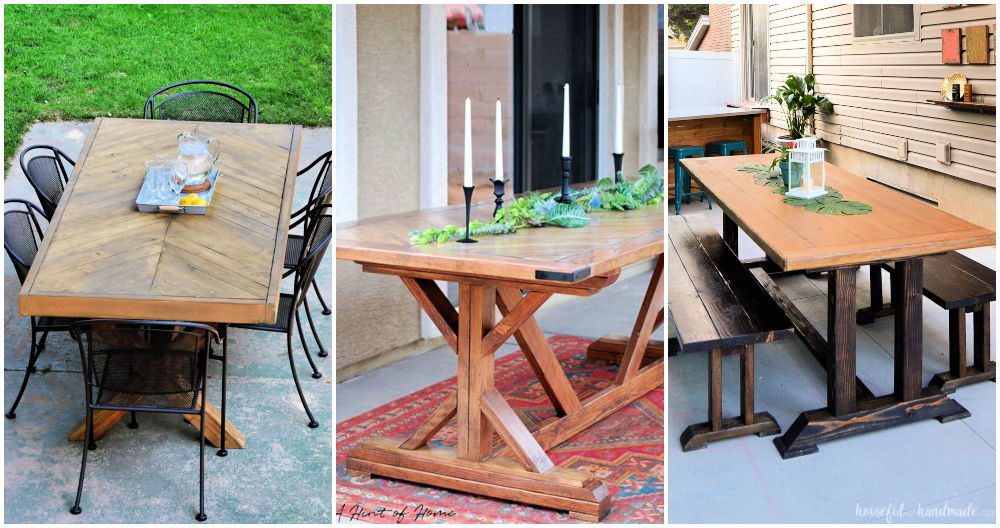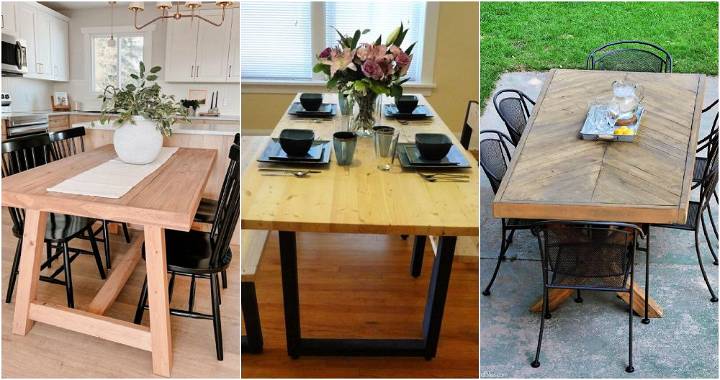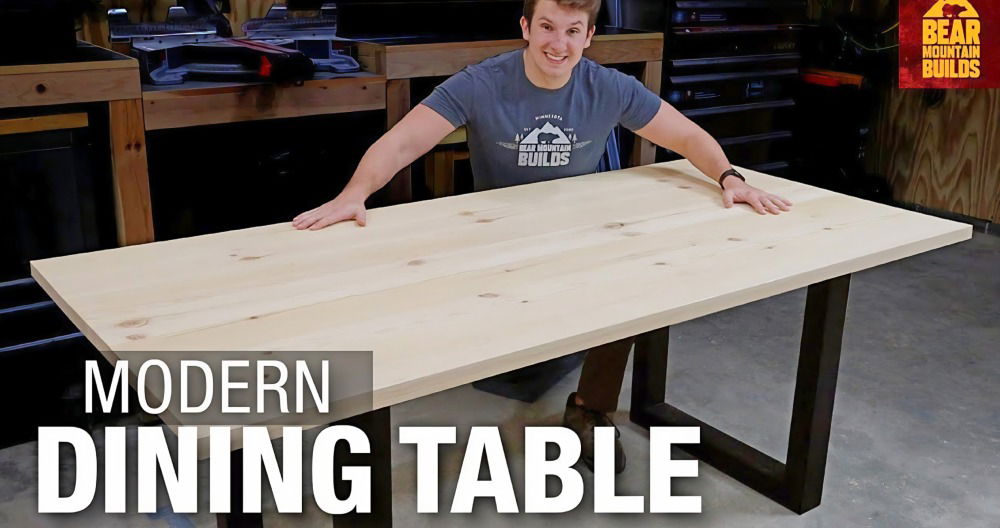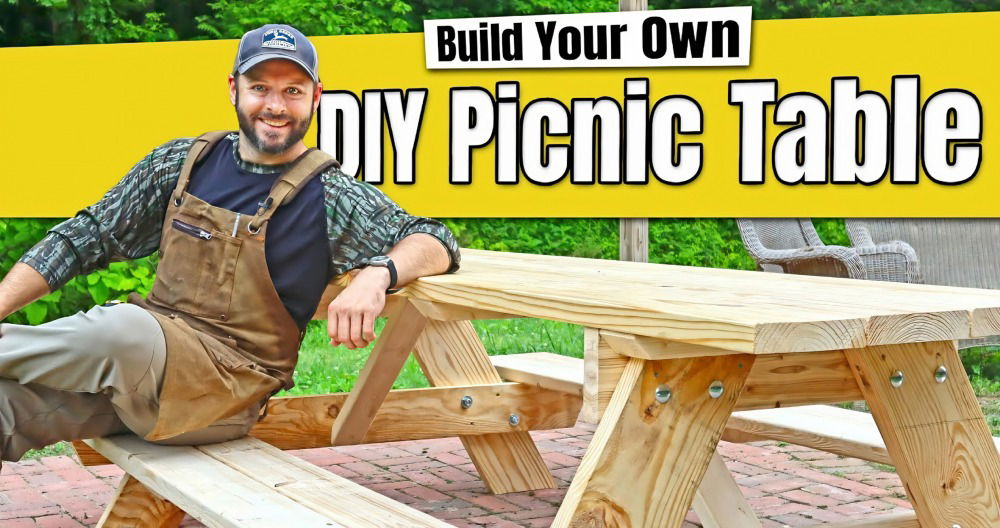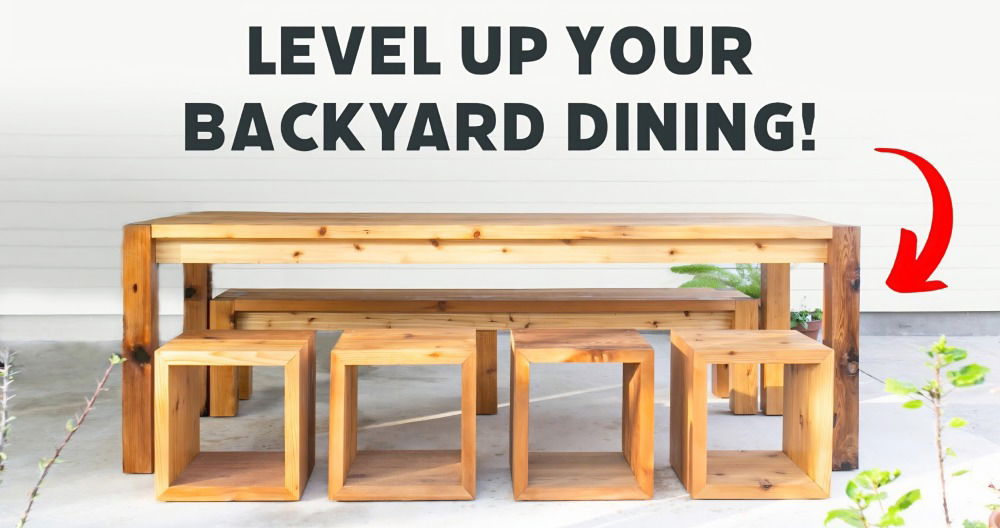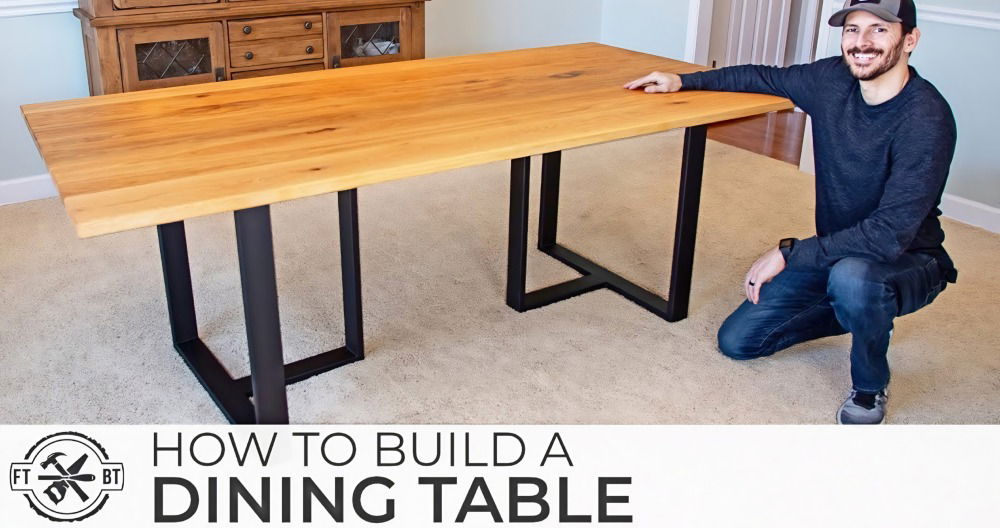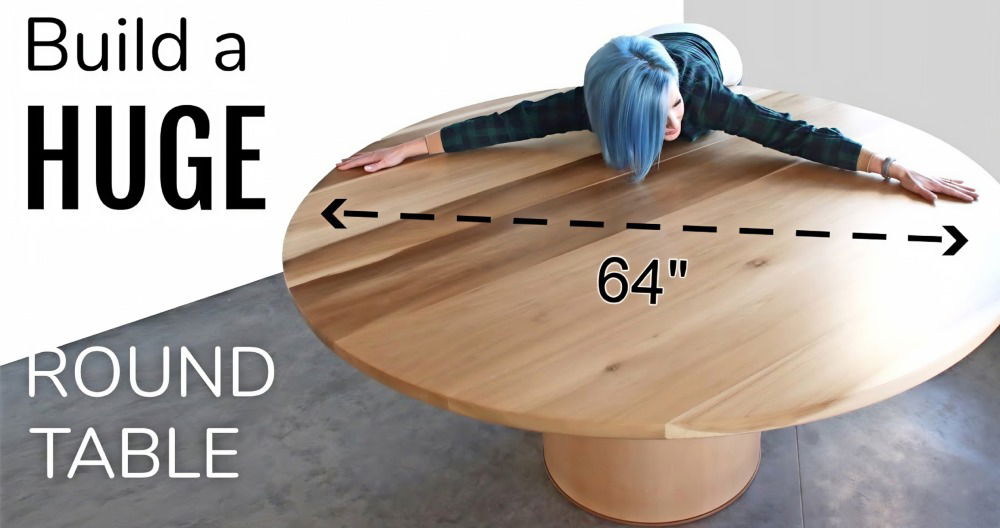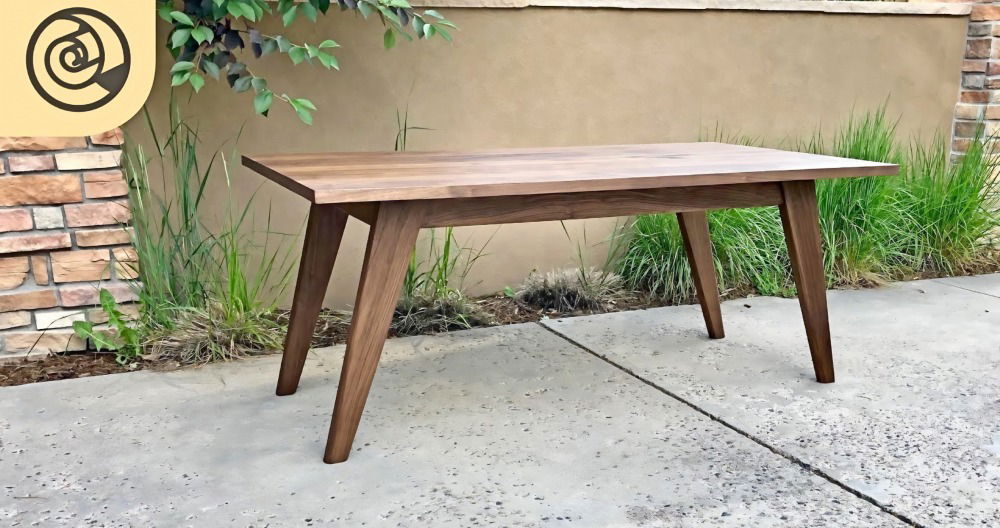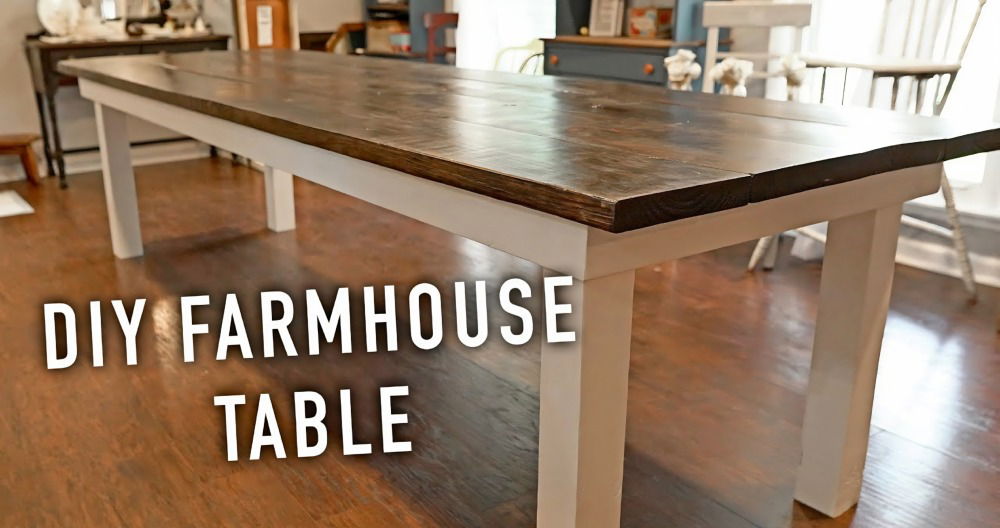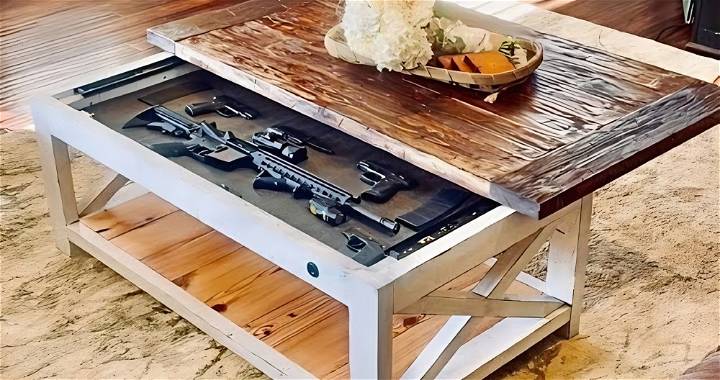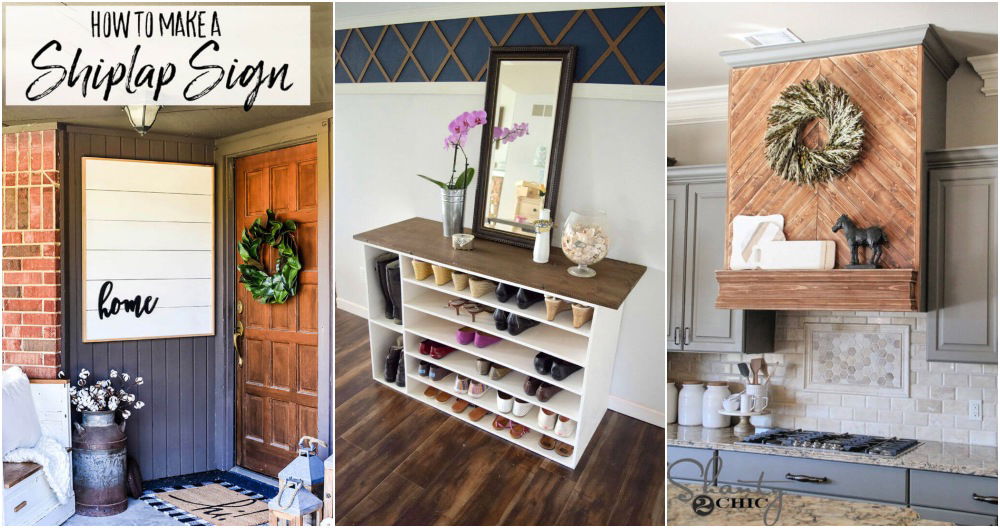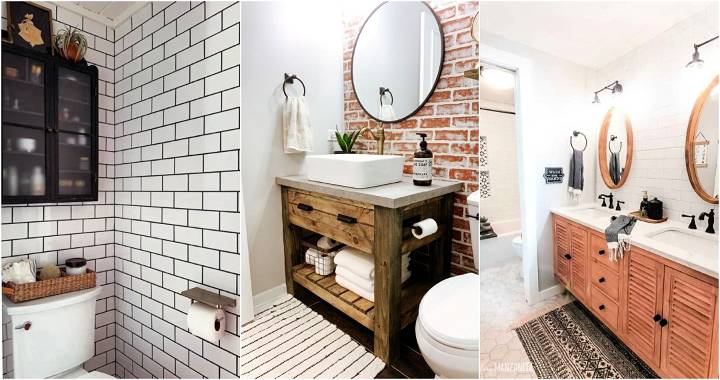As someone who has always had a passion for DIY projects and a special love for making things out of wood, building a farmhouse dining table with benches was a project I had eyed for a while. It all started when a friend pointed out the beauty and warmth a handcrafted wooden table could bring to a home. Plus, the hefty prices of store-bought tables gave us more than enough reason to embark on this adventure.
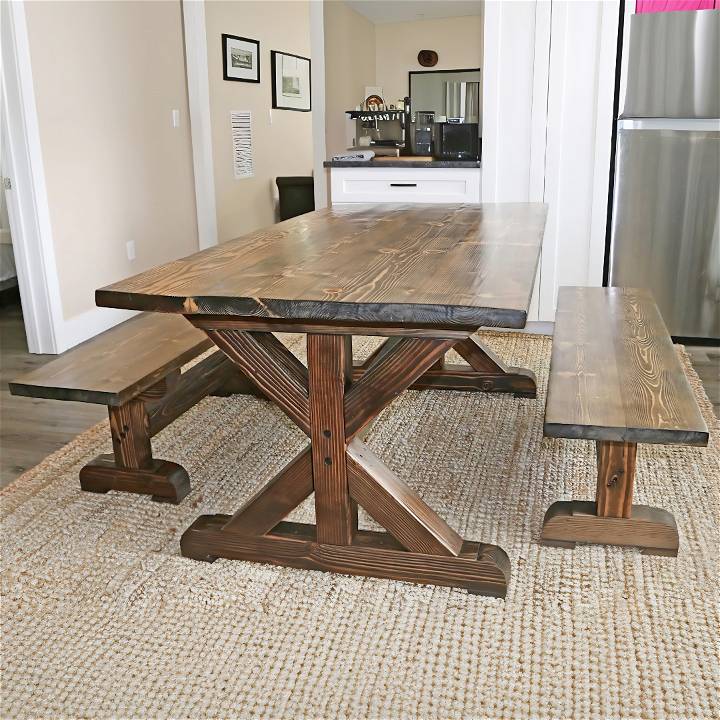
Starting the Project
The first step was all about planning and gathering materials. We needed 4x4s for the legs, 2x10s and 2x8s for the tabletop and benchtops. The reason for choosing these specific materials was their durability and the aesthetic appeal they held for making a farmhouse-style table.
Why Materials Matter
Choosing straight, flat boards with minimal knots is crucial as it saves you a headache during assembly and ensures a smooth, attractive finish. It's a step you do not want to rush or compromise on, trust me.
Step by Step Instructions
Learn how to build your own farmhouse dining table with our step-by-step instructions. Make a stylish and functional piece for your home.
Cutting the Lumber
Equipped with our cut list and a miter saw, we began cross-cutting. The precision of the miter saw was indispensable, especially for the table and bench legs. We reserved the tabletop and bench tops for later, as they required a different kind of attention to ensure they'd come together seamlessly.
The Importance of Accurate Cutting
Cutting the wood accurately cannot be overstated. Uniform lengths ensure that your table and benches won't wobble and will look professionally made. Using a stop block with your miter saw helps immensely for repeated cuts.
Adding Style and Detail
To add a bit of flair, we decided on rounded corners for the bench and table legs. Using a homemade template from a coffee can lid, we traced and cut the curves with a jigsaw. It was a small detail but added a lot of character to the overall look.
Style Matters
Taking the time to add design elements like rounded edges can significantly impact the final look. It transforms a simple table into a piece of art that stands out in your dining space.
Assembly Time
The assembly was probably where the real fun began. Building strong connections between the pieces was key. We used decking screws for their strength and durability. Trust me on this, an impact driver becomes your best friend when working with long decking screws.
The Key to a Strong Build
Ensuring each connection is secure means your table will stand the test of time. Don't skimp on the quality of your screws. And yes, the impact driver is mightier than the screwdriver in this scenario.
Finishing Touches
Sanding was the next major step before moving on to staining. We went up to 220 grit for a smooth finish on the top surfaces where it mattered most. Choosing the right stain was crucial, as it would define the table's final look – we opted for a classic, warm hue that accentuated the wood's natural grain.
Finishing Can Make or Break Your Project
Sanding and staining are not just afterthoughts; they enhance the beauty of your work. Spend time on them, and the results will speak volumes.
Building our farmhouse table and benches was a rewarding journey. We learned patience, precision, and the value of quality craftsmanship.
Why Attempt This Project?
The journey of building our farmhouse table and benches was filled with learning and laughter. It's a perfect project for anyone wanting to dip their toes into the world of woodworking. The satisfaction of sitting around a table you built with your hands is unmatched. Plus, it becomes a conversation starter for anyone who visits.
Remember, the beauty of DIY is in the journey and the unique touch you bring to your creations. So, roll up your sleeves, and don't be afraid to make your farmhouse dining table.
Design Customization Ideas for Your Farmhouse Dining Table
Building a farmhouse dining table is not just about functionality; it's also an opportunity to inject your personality and style into one of the most important pieces of furniture in your home. Here are some design customization ideas that can help you make your DIY farmhouse dining table uniquely yours:
Choose Your Wood Wisely
The type of wood you choose can significantly affect the look and feel of your table. Pine is popular for its affordability and rustic appearance. Oak and maple provide durability and a more refined look. Consider the grain patterns and natural color of the wood when making your selection.
Tabletop Patterns
Instead of a traditional straight plank top, consider arranging the wood in a herringbone or chevron pattern for a touch of elegance. This can be a focal point and conversation starter during dinner parties.
Paint and Stain Options
While natural wood is beautiful, don't be afraid to experiment with paint or stain. A whitewashed finish can give your table a shabby chic look, while a dark stain can make it feel more formal and grounded.
Legs and Bases
The legs or base of your table can dramatically change its overall design. Turned legs offer a classic, country feel, while metal legs can add an industrial edge. For a more contemporary look, consider a pedestal base.
Distressing Techniques
For that authentic farmhouse feel, distressing the wood can add character. Use tools to build dents and scratches, and sand the edges for a worn look. Remember, less is more; you want it to look naturally aged, not damaged.
Add Functionality
Consider adding drawers or shelves underneath for extra storage. This can be a practical addition for placemats, napkins, or cutlery, keeping everything close at hand.
Personal Touches
Finally, personalize your table with unique touches. Inlay a family crest or initials, add decorative nailhead trim, or incorporate a hidden leaf for extendable functionality.
Remember, in DIY, there are no rules. Be creative, mix styles to make a farmhouse table that fits your taste. Keep it simple, have fun, and you'll have a meaningful, functional piece.
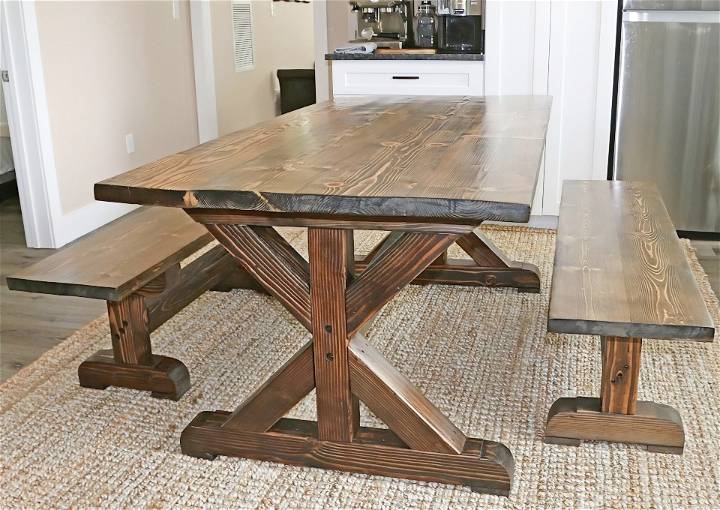
Troubleshooting Common Issues
When embarking on the journey of building your own farmhouse dining table, you may encounter a few roadblocks along the way. Here's a guide to help you troubleshoot some of the most common issues you might face:
Uneven Table Legs
- Problem: One of the legs is shorter than the others, causing the table to wobble.
- Solution: Measure all legs to ensure they are of equal length. If one is shorter, you can add an adjustable foot or shim it with thin pieces of wood. For longer legs, carefully sand or cut the excess length.
Wood Splitting
- Problem: The wood begins to split when you're screwing or nailing it together.
- Solution: Always pre-drill holes for screws to prevent splitting. If you're using nails, blunt the tip with a hammer before driving it into the wood to reduce the risk of splitting.
Staining Issues
- Problem: The stain is uneven or not absorbing properly.
- Solution: Ensure the wood is properly sanded and cleaned before applying the stain. Apply a pre-stain wood conditioner to help the stain absorb evenly. Remember to stir the stain thoroughly and apply it with the grain.
Difficulty Joining Pieces
- Problem: Struggling to align and join pieces squarely.
- Solution: Use clamps to hold pieces in place before joining. Check the alignment with a square tool and make adjustments as needed. Consider using dowels or biscuits for a stronger joint.
Surface Imperfections
- Problem: The tabletop has dents or scratches.
- Solution: Fill small imperfections with wood filler that matches the color of your wood. Sand the area smooth once the filler is dry. For larger issues, you may need to replace the affected plank.
Sticky Drawers or Shelves
- Problem: Drawers or shelves added for functionality are sticking and not sliding smoothly.
- Solution: Check for squareness and ensure that the drawer slides are installed correctly. Wax the runners or use drawer slide tape for smoother operation.
By preparing to manage common issues, you can confidently DIY a farmhouse dining table. Patience and attention to detail are key.
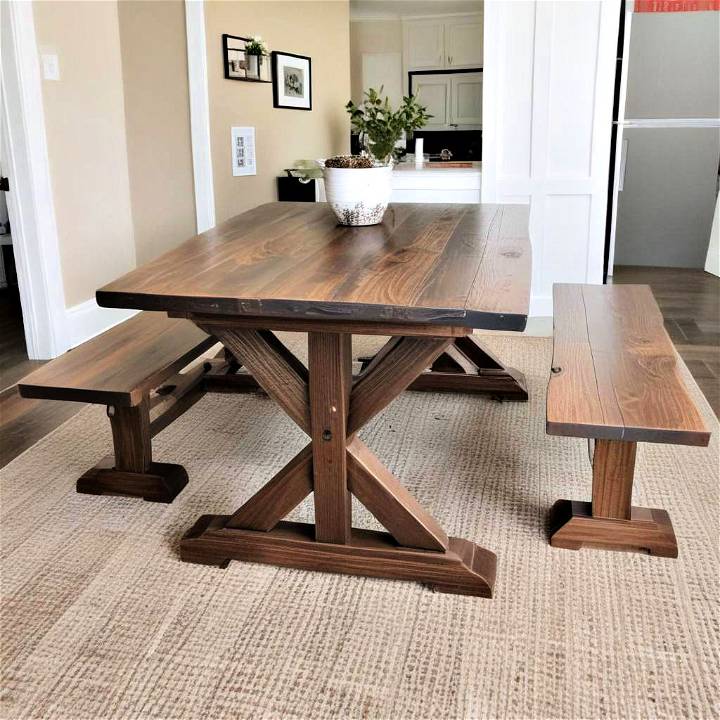
FAQs About DIY Farmhouse Dining Tables
Get answers to all your questions about DIY farmhouse dining tables! Learn how to build, style, and maintain your own rustic piece with our FAQs.
What is the best wood to use for a farmhouse dining table?
The best wood for a farmhouse dining table depends on your budget and desired look. Pine is affordable and has a rustic charm. Oak and maple are more expensive but offer durability and a refined appearance. Choose wood with a grain and color that appeals to you and fits your home's style.
How can I make my farmhouse table more durable?
To enhance durability, apply a sealer or varnish after staining or painting your table. This will protect the wood from spills, stains, and wear. Additionally, ensure all joints are securely fastened and consider using hardwoods like oak or maple for areas that will experience heavy use.
Can I build a farmhouse table if I'm not experienced in woodworking?
Yes, building a farmhouse table can be a beginner-friendly project. Start with a simple design and follow a step-by-step guide. Use pre-cut wood from your local hardware store to make the process easier, and don't hesitate to ask for advice from more experienced woodworkers or staff at the store.
How do I prevent my farmhouse table from wobbling?
To prevent wobbling, ensure all legs are cut to the same length and the table is level. If your floor is uneven, adjustable feet can be added to the legs to achieve stability. Check all joints and reinforce any loose connections.
How can I give my farmhouse table a unique look?
Personalize your table by experimenting with different stains, paints, and finishes. Try techniques like distressing or whitewashing for a unique look. You can also add decorative elements such as turned legs, intricate carvings, or a patterned tabletop design.
By addressing these common questions, you'll be better prepared to tackle your DIY farmhouse dining table project with confidence and creativity.
Conclusion:
In conclusion, building your own DIY farmhouse dining table can be a rewarding and cost-effective project. With a few tools and some creativity, you can transform your space with a personalized touch.


